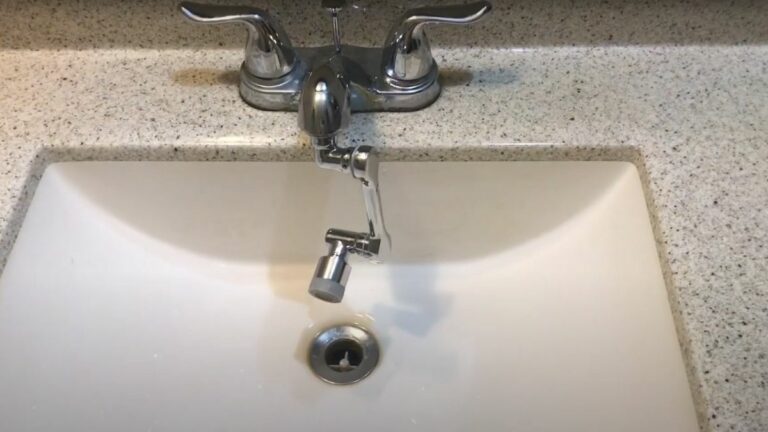How Many Gpm for Tankless Water Heater
You’ll need to figure out your home’s peak water demand in gallons per minute (GPM) to pick the right tankless water heater. Add up the flow rates of all fixtures you expect to use at once—showers, faucets, appliances—to know your combined GPM. Choosing a unit with too low a GPM means low pressure or temperature drops, while too high wastes energy. Understanding your exact needs helps you find the perfect balance and avoid surprises down the line.
Understanding Gallons Per Minute (GPM) in Tankless Water Heaters
Although you might already know that GPM stands for gallons per minute, understanding how it applies to tankless water heaters is crucial for choosing the right unit.
GPM measures the flow rate of water the heater can supply per minute while maintaining the desired temperature.
When you pick a tankless water heater, you want one that matches your typical water use rate.
If the unit’s GPM rating is too low, you’ll experience reduced water temperature or pressure during simultaneous uses like showers and dishwashing.
Conversely, a unit with a high GPM rating ensures consistent hot water flow without interruptions.
Knowing the GPM helps you avoid overspending on an oversized model or ending up with one that can’t meet your household’s hot water needs efficiently.
Factors Affecting Your Household’s Hot Water Demand
To choose the right tankless water heater, you need to consider the factors that influence your household’s hot water demand. First, think about the number of people living in your home—more people typically mean higher hot water usage.
Also, consider the types and number of fixtures, like showers, faucets, and appliances that use hot water simultaneously. Your lifestyle plays a role too; if you often run multiple showers or use the dishwasher and laundry at the same time, your demand spikes.
Don’t forget climate factors—colder water entering your system requires more energy to heat, affecting flow rates. Understanding these elements helps you avoid undersizing or oversizing your system, ensuring consistent hot water without wasting energy or money.
Calculating the Required GPM for Your Home
Once you understand your household’s hot water needs, you can calculate the gallons per minute (GPM) required to supply your fixtures efficiently. Start by listing all fixtures that might run simultaneously, like showers, sinks, and appliances.
Note each fixture’s flow rate—usually measured in GPM—and add them up. For example, a shower might use 2.5 GPM, and a sink 1.5 GPM. If you expect both to run together, you’ll need a water heater that can handle at least 4.0 GPM.
Don’t forget to factor in peak usage times when multiple fixtures operate at once. By totaling these flow rates, you ensure your tankless water heater delivers enough hot water without delays or drops in temperature, keeping your home comfortable and efficient.
Comparing GPM Ratings of Popular Tankless Water Heaters
How do you choose the right tankless water heater based on GPM ratings? Start by comparing popular models to match your household’s demand.
For example, the Rheem RTEX-13 delivers about 3.1 GPM, suitable for a small apartment or single bathroom.
The EcoSmart ECO 27 offers up to 6.5 GPM, ideal for larger homes with multiple simultaneous uses.
The Stiebel Eltron Tempra 29 provides around 5.9 GPM, balancing efficiency and capacity well.
Keep in mind, higher GPM means greater flow but might require more energy.
Look at your peak usage time and pick a model that comfortably covers that rate.
Comparing these ratings helps you avoid underperformance or overspending on an oversized unit that wastes energy.
Tips for Choosing the Right GPM to Maximize Efficiency
Although selecting the right GPM might seem straightforward, choosing a flow rate that matches your household’s actual needs can significantly boost your tankless water heater’s efficiency.
Start by listing how many fixtures you use simultaneously—like showers, sinks, and appliances. Calculate their combined flow rates to find your peak demand.
Don’t oversize; a higher GPM heater uses more energy than necessary. Conversely, undersizing means running out of hot water.
Consider seasonal temperature changes since colder water requires a higher GPM to maintain consistent warmth.
Finally, factor in future additions to your home to avoid frequent replacements.
Frequently Asked Questions
Can a Tankless Water Heater Run on Solar Power?
Yes, you can run a tankless water heater on solar power if you have a compatible solar electric system with enough energy output. You’ll need proper inverters and batteries to ensure consistent, reliable heating even when the sun isn’t shining.
How Long Do Tankless Water Heaters Typically Last?
Tankless water heaters typically last around 20 years. If you maintain yours properly by flushing it yearly and checking for mineral buildup, you can expect efficient performance and a longer lifespan without unexpected breakdowns.
Are Tankless Water Heaters Compatible With Hard Water?
Yes, tankless water heaters can work with hard water, but you’d need a water softener or regular descaling to prevent mineral buildup. Otherwise, hard water might reduce efficiency and damage the unit over time.
What Maintenance Is Required for Tankless Water Heaters?
You’ll need to flush your tankless water heater annually to remove mineral buildup, clean the inlet filter regularly, and inspect the venting system. This keeps it efficient and extends its lifespan without costly repairs.
Do Tankless Water Heaters Increase Home Resale Value?
Yes, tankless water heaters can boost your home’s resale value. Buyers appreciate energy efficiency and space-saving features, so installing one makes your property more attractive and modern, potentially leading to a quicker sale at a better price.
Conclusion
Now that you understand GPM and how it impacts your tankless water heater choice, you can confidently select the right size for your home. Consider your household’s peak hot water needs and compare GPM ratings carefully. Picking the right GPM not only ensures you never run out of hot water but also helps you save energy and money. With these tips, you’ll enjoy efficient, on-demand hot water whenever you need it.

